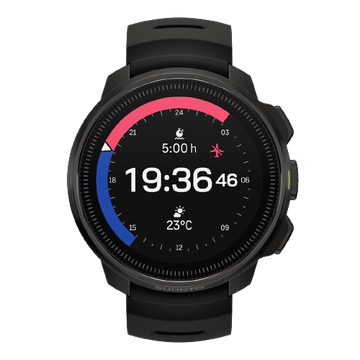Endurance training is more than just logging hours or kilometers; it’s about training smart. One of the most critical factors in effective endurance training is intensity.
Training intensity determines the type of adaptations your body makes, how efficiently you improve, and even how well you recover. Whether you’re preparing for a marathon, a cycling event, or simply aiming to improve your fitness, understanding and managing training intensity can be a game-changer. Let’s dive into why training intensity matters and how to use it to maximize your performance.
Stimulating the right physiological adaptations
Every workout you do triggers specific physiological changes in your body. The key to endurance training success is to target these changes effectively by working at the right intensity:
Low intensity (Zones 1-2)
This is the foundation of endurance training. Low-intensity workouts improve aerobic capacity, boost your body’s ability to use fat as fuel, and enhance overall cardiovascular efficiency. These sessions are often referred to as “base training.”
Moderate intensity (Zone 3)
Training in this zone focuses on improving your ability to sustain effort over long periods. It’s ideal for tempo or threshold workouts, which help build endurance for race-pace efforts.
High intensity (Zones 4-5)
High-intensity sessions, like intervals or hill sprints, target anaerobic capacity and increase your VO2 max (the maximum amount of oxygen your body can use during intense exercise). These efforts are shorter but crucial for building speed and power.
Each intensity level serves a purpose, and balancing them ensures that you’re building all the systems needed for peak performance.
Avoiding the "Gray Zone"
One common mistake among endurance athletes is spending too much time in the “gray zone”—a moderate intensity that’s too hard to be easy and too easy to be truly effective. While these sessions might feel productive, they don’t provide the distinct benefits of low- or high-intensity training.
For example, too much moderate-intensity training can leave you fatigued without significantly improving aerobic capacity or speed. This is why many elite endurance athletes follow the 80/20 rule: 80% of their training is low intensity, and 20% is high intensity. This polarized approach maximizes gains while minimizing the risk of overtraining.
Balancing stress and recovery
Training intensity isn’t just about pushing hard; it’s also about knowing when to back off. Low-intensity sessions play a crucial role in recovery, allowing your body to repair and adapt while still maintaining movement and circulation.
High-intensity workouts are effective but stressful. Without sufficient recovery, they can lead to burnout, injuries, or overtraining. A well-designed plan alternates between different intensity levels to ensure that you’re challenging yourself without breaking down.
Periodization and progression
Endurance training isn’t static; it evolves over time. Periodization—the systematic planning of training—relies heavily on varying intensity to achieve peak performance at the right time.
Base phase
Focuses on low-intensity workouts to build aerobic endurance and lay the foundation for harder efforts later.
Build phase
Introduces moderate and high-intensity sessions to develop specific fitness qualities like speed, power, and endurance.
Peak phase
Prioritizes high-intensity efforts to fine-tune your performance for race day.
By manipulating intensity throughout your training cycles, you can ensure steady progress without hitting a plateau or risking overtraining.
Mental benefits of intensity variation
Training intensity doesn’t just impact your body; it also affects your mind. Low-intensity sessions can be meditative, helping you relax and build mental resilience. On the other hand, high-intensity workouts teach you how to push through discomfort and develop mental toughness.
This variation keeps training engaging and prevents monotony. Knowing that each session has a specific purpose can also boost motivation and focus, making it easier to stick to your plan.
Tracking intensity: tools and techniques
To train effectively, you need to measure and monitor your intensity. Here are the most common methods:
Heart rate
Heart rate monitors are a reliable way to track intensity. Zones are typically calculated based on your lactate threshold. Low-intensity efforts should feel easy and keep your heart rate in Zones 1-2, while high-intensity efforts will push you into Zones 4-5.
Pace
Runners and swimmers often use pace as a guide, especially for interval or tempo workouts. Knowing your lactate threshold pace and training at different percentages of that pace can help fine-tune your efforts.
Power
Power meters are popular among cyclists and increasingly among runners. Power provides an objective measure of effort, regardless of terrain or conditions. It’s especially useful for maintaining consistent intensity during intervals or long efforts.
Suunto ZoneSense
Suunto ZoneSense measures heart stress through heart rate variability (HRV), offering real-time insight into training intensity. ZoneSense is driven by the advanced DDFA index, which tracks changes in metabolic state, and provides accurate feedback on whether your intensity is aerobic, anaerobic, or reaching VO2 max levels. This helps you to stay in the optimal training zone regardless of the activity type or the day.
Learn more about Suunto ZoneSense here.
Perceived exertion
The Rate of Perceived Exertion (RPE) scale is a subjective but valuable tool. On a scale of 1-10, low-intensity efforts feel like 2-3, moderate efforts like 5-6, and high-intensity efforts like 8-10. RPE can be used alongside other metrics or when technology isn’t available.
Combination of metrics
For the most accurate picture, combine multiple methods. For example, use heart rate and perceived exertion during a long run to ensure you’re not pushing too hard, or pair power or pace with heart rate to track fitness gains over time. If your heart rate is lower with the same power or pace as before, it can indicate improvements in your fitness.
Conclusion: train smarter, not just harder
Training intensity is the cornerstone of effective endurance training. By understanding how different intensity levels impact your body and incorporating a mix of low, moderate, and high-intensity sessions, you can optimize your training, avoid plateaus, and achieve your goals. Tracking intensity with your Suunto watch and utilizing tools like Suunto ZoneSense you can ensure that every workout meets its purpose.
Remember, endurance training isn’t just about working hard; it’s about working smart. Prioritize intensity, listen to your body, and watch as your performance soars.
































































































